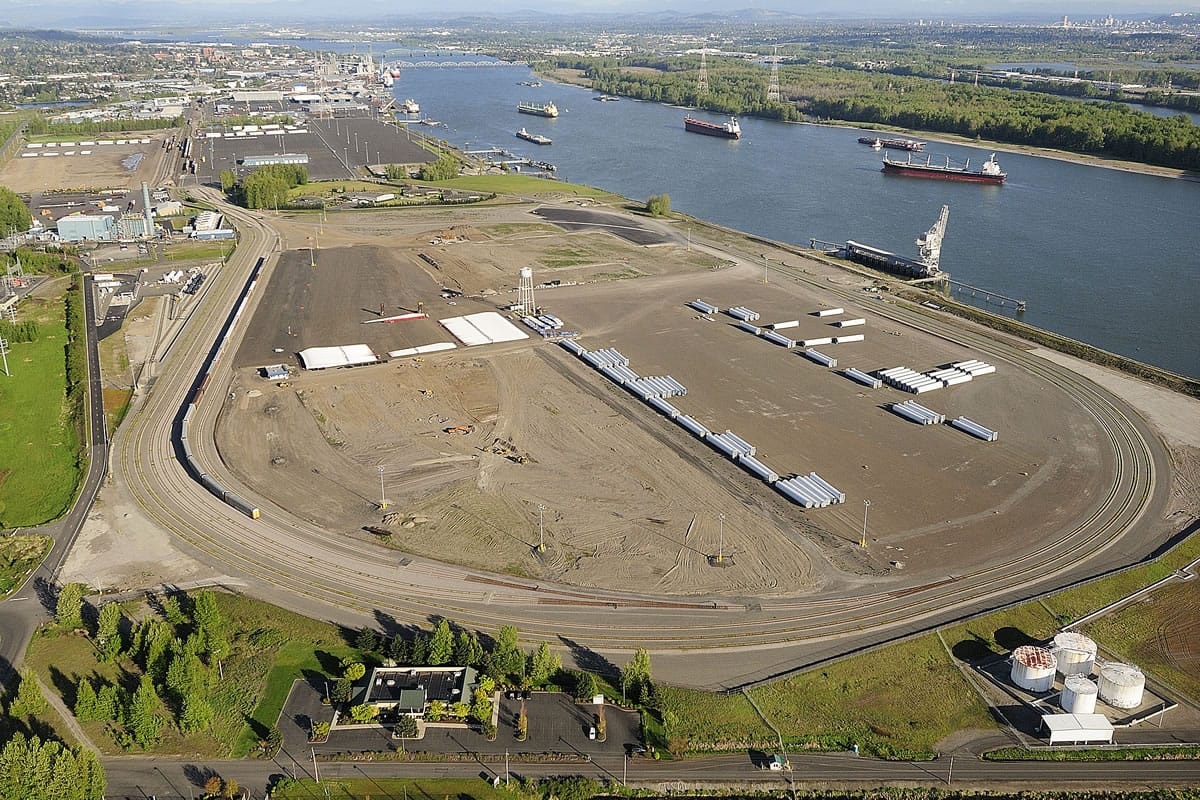In the past two years, crude oil has become the top problem in terms of hazardous materials seeping from rail cars as trains haul commodities across U.S. and Canadian railroads, a federal official told the Port of Vancouver on Tuesday.
However, the frequency of oil spills along railways remains very low, according to William Ellings, a hazardous materials specialist with the Federal Railroad Administration.
While no one is happy with any discharge of hazardous material, Ellings said, “we’ve got a good handle on it.”
Ellings made his remarks as one of three panelists who delivered data-filled presentations to the port’s Board of Commissioners after the board’s regularly held public hearing. The port brought them together for a workshop aimed at helping commissioners understand how railroad operators and regulators handle hazardous materials.
The port held the workshop in light of the proposal by Tesoro Corporation and Savage Companies to build and operate facilities to store, load and unload crude oil at the port. The proposal — which the companies expect will take nine to 18 months to secure permits — prompted concern among environmentalists, several of whom testified to commissioners Tuesday.
Jasmine Zimmer-Stucky, community organizer for Columbia Riverkeeper, urged commissioners to expand opportunities for the public to weigh in on the proposal “before any contracts are signed.” She said Columbia Riverkeeper is concerned about the potential for oil spills in the Columbia River Gorge.
Tuesday’s workshop marked the second one related to the proposed joint venture. Commissioners are expected to convene at least two more such discussions before decisions are made.
‘It’s all volume’
As part of his presentation, Ellings addressed the “non-accident release” of hazardous materials, which refers to the unintentional leakage of a dangerous material caused by, say, a defective valve rather than a train derailment or collision.
In 2010, the commodity labeled “alcohols” had 81 non-accident releases in the U.S. and Canada, topping a list of 14 commodities, according to Ellings. With zero such leaks that year, crude oil wasn’t on the list.
In 2012, however, crude oil suddenly topped the list, with 108 non-accident releases, Ellings said. The reasons for the spike include a shift by the U.S. to wean itself off foreign oil, a move by refinery operators to rapidly absorb North Dakota’s oil boom and the economic advantages of hauling oil by rail, Ellings said.
“It’s all volume,” he said.
Still, when you measure the number of non-accident releases per 1,000 tank-car originations, Ellings said, crude oil is “way down the list.”
Overall, he said, the annual number of tank cars with non-accident releases of toxic material has gone from 1,241 in 1996 to 575 in 2012 — a 54 percent decrease.
Patrick Brady, assistant director of hazardous materials for BNSF Railway, told commissioners the railroad has extensive systemwide and local emergency response plans, and equipment to respond to environmental hazards.
For U.S. railroads, he said, hazardous materials account for 5 percent of total freight rail carloads. And moving hazardous materials by rail is 16 times safer than moving them on roads, Brady said.
Under the plan by Tesoro and Savage, crude oil would be shipped to the port by rail from the Bakken oil formation in North Dakota. Then it would be hauled by ship to refineries in Washington, California and Alaska for domestic purposes, including gasoline for cars and trucks.
For the plan to move forward, port commissioners must approve a lease deal to accommodate the project. The companies’ proposal also will undergo examination by Washington state’s Energy Facility Site Evaluation Council, a one-stop place for evaluating requests for permits to build major energy facilities.
Aaron Corvin: http://twitter.com/col_econ; http://on.fb.me/AaronCorvin; 360-735-4518; aaron.corvin@columbian.com




